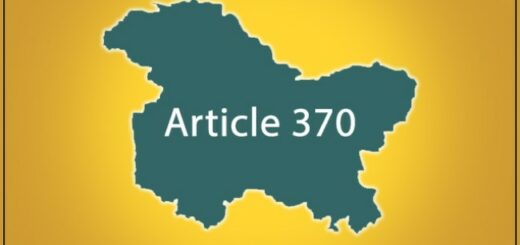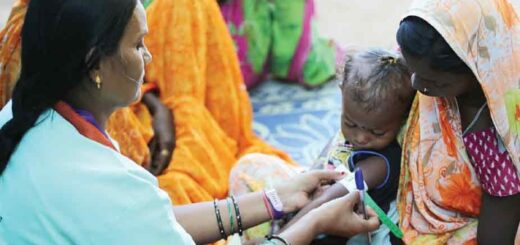National Current Affairs – UPSC/KAS Exams- 21st March 2019
UN World Happiness Report
Topic: Important Reports
In News: Indians are not as happy in 2019 as they were in 2018 and the country figures at 140th place, seven spots down from last year, on this year’s UN World Happiness Report released recently which is topped by Finland for the second year in a row.
More on the Topic:
- The report was released by the Sustainable Development Solutions Network for the United Nations on March 20 which has was declared as World Happiness Day by the UN General Assembly in 2012.
- The report ranks countries on six key variables that support well-being: income, freedom, trust, healthy life expectancy, social support and generosity.
- According to the report, the overall world happiness has fallen over the past few years, which has mostly been fuelled by a sustained drop in India, which came in 140th place this year compared with 133rd place in 2018.
- The UN’s seventh annual World Happiness Report, which ranks the world’s 156 countries on “how happy their citizens perceive themselves to be”, also noted that there has been an increase in negative emotions, including worry, sadness and anger.
- Finland has been ranked as the happiest country in the world for the second year in succession. The Nordic nation is followed by Denmark, Norway, Iceland and The Netherlands.
Neighbours performance:
- Pakistan is ranked 67th, Bangladesh 125th and China is place at 93rd, according to the report.
- People in war-torn South Sudan are the most unhappy with their lives, followed by Central African Republic (155), Afghanistan (154), Tanzania (153) and Rwanda (152).
- The happiness study ranks the countries of the world on the basis of questions from the Gallup World Poll. The results are then correlated with other factors, including GDP and social security.
- The United States ranks at 19th place for happiness, despite being one of the richest countries in the world.
Source: The Hindu
India’s TB elimination dream
Topic: Health
In News: Of the 10 million new tuberculosis (TB) cases reported globally in 2017 by the World Health Organisation, 2.74 million were from India, showing a marginal reduction from 2.79 million in 2016.
More on the Topic:
- Despite TB incidence in the country being 204 cases per 1,00,000 in 2017, the government has set a highly ambitious target of “eliminating TB by 2025”, five years ahead of the Sustainable Development Goals (SDGs) target.
- According to The Lancet Global Health article based on modelling for three high-burden countries, including India, compared with 2015 data, 57% reduction in incidence and 72% reduction in mortality will been seen only by 2035.
- Strengthening the care cascade could reduce cumulative TB incidence by 38% in the case of India, it notes. India has to adopt measures to prevent TB on a population level to eliminate the disease in the coming decades.
- The India report card says diagnosis and treatment for drug-sensitive and drug-resistant TB need improvement.
- Modelling suggests that lives of eight million (28%) people with TB can be saved over the next 30 years if tests are subsidised and patients are supported to complete the treatment.
- “This would cost an extra $290 million each year, which is significantly less than India’s $32 billion losses associated with TB mortality each year.
- The Lancet Commission recommends that India should scale up access to TB services for all those seeking them, optimise engagement of private sector providers and guarantee universal access to drug susceptibility testing and second line TB drugs.
About India’s ambitious plan-Loopholes:
- India has set an ambitious goal of eliminating TB by 2025, but integration of TB services with the primary health system to reduce diagnostic delays is not happening. Patients are not diagnosed and treated at the primary level, which is the first point of contact. Only this will lead to early diagnosis and help cut the transmission cycle.
- In studies carried by us in Chennai, we have seen diagnosis delay up to two months in the private sector.
- Funding for the national TB control programme is encouraging, there is political will and the programme mentions all the correct initiatives to bring the disease under control. Only accountability will allow course correction if things are not going well.
- 10% of individuals with TB die or self-cure before presenting for care. According to the survey in Gujarat, 40% of those bacteriologically tested positive for TB had not sought care.
- Patient delay before first presentation for care is 4.1 months. Even initiation of treatment after diagnosis happens after 2.1 days.
- The proportion of people with TB completing treatment is 85%. But it says systematic efforts to screen high-risk populations have already begun in India.
Government Initiatives:
- Instead of waiting for people with TB to reach diagnostic centres for testing, India has now undertaken case-finding campaigns to cut the transmission cycle. So far 144 million people at risk of the disease in 447 districts have been screened and more than 50,000 new cases have been detected.
Model Mains Question: According to Lancet India is likely to miss it’s 2025 TB elimination target. Analyze the challenges associated with TB elimination and suggest measures to achieve the target.
Source: The Hindu
Evidence of water found on asteroid Bennu
Topic: Science and Technology
In News: Scientists have discovered evidence of abundant water-bearing minerals on the surface of the near-earth asteroid Bennu.
More on the topic:
- Data from NASA’s OSIRIS-REx spacecraft that is currently orbiting the asteroid confirm presence of aqueously altered, hydrated minerals on its surface. Scientists say similar objects may have seeded the earth with water and organic materials.
- The OSIRIS-REx (Origins, Spectral Interpretation, Resource Identification, Security, Regolith Explorer) is a NASA asteroid study and sample-return mission.
- The mission’s main goal is to obtain a sample of at least 60 grams (2.1 oz) from 101955 Bennu, a carbonaceous near-Earth asteroid, and return the sample to Earth for a detailed analysis.
- The material returned is expected to enable scientists to learn more about the formation and evolution of the Solar System, its initial stages of planet formation, and the source of organic compounds that led to the formation of life on Earth.
Source: The Hindu
PM Kisan Yojana
Topic: Government Policies
In News: With just 10 days to go for the first payout deadline under PM-KISAN, only 2.74 crore farm families, or about 56% of the total list of 4.92 crore names submitted by States, have been paid so far.
More On the Topic:
- The scheme to pay 6,000 per year to small farming families was introduced less than a month before the announcement of the Lok Sabha polls, and the first instalment of Rs. 2,000 is to be paid by March 31.
- The scheme will cost ₹75,000 crore (US$10 billion) per annum and will come in effect from December 2018. ₹6,000 per year will be paid to each eligible farmer in three instalments and will be deposited directly to their bank accounts
Objectives of the Scheme:
- With a view to augment the income of the Small and Marginal Farmers (SMFs), the Government has launched a new Central Sector Scheme, namely, “Pradhan Mantri KIsan SAmman Nidhi (PM-KISAN)” in the current financial
- The PM-KISAN scheme aims to supplement the financial needs of the SMFs in procuring various inputs to ensure proper crop health and appropriate yields, commensurate with the anticipated farm income at the end of the each crop cycle.
- This would also protect them from falling in the clutches of moneylenders for meeting such expenses and ensure their continuance in the farming activities
Source:The Hindu
India Post releases special stamp cover on Ice Stupas
Topic: Environment and Ecology
In News: The Indian Department of Post on March 18, 2019 released a ‘special stamp cover on Ice Stupa’.
More on the Topic:
- The special stamps aim to create awareness about depleting glaciers and affect the ecology around the Himalayas. Global warming and ecological imbalance have caused irreparable damage to the Himalayas in the past several years.
- Ice Stupas also known as artificial glaciers, are being built with an aim to reduce the problem of water shortage, faced by Ladakhi farmers due to receding of glaciers.Over 12 villages in Ladakh have built Ice Stupas this year in various villages.
- The artificial glaciers are being built by saving winter water, which flows waste, in a cone-shaped stupa that does not melt easily.
- The stupas have been designed to melt slowly, as a result serving the purpose of drinking and irrigation for those living in the nearby villages.
- The Ice Stupa is a survival technique that has been developed over a period. Each stupa has the capacity to store at least 30-50 lakh litres of water. This is apart from the naturally saved water in the slopes of mountains.
Source: The Hindu
Cost Of Living Survey
Topic: Important Reports
In News: The Economist Intelligence Unit has released the report of the Worldwide Cost of Living Survey 2019.
More on the Topic:
- FOR THE first time in its 30-year history, the Worldwide Cost of Living Survey from The Economist Intelligence Unit gives the title of the world’s most expensive city to three place
- Singapore marks its sixth straight year at the top of the rankings, and is joined there by Hong Kong and Paris.
- The survey, which compares prices across 160 products and services, finds that living costs in all three cities are 7% higher than in New York, the benchmark city.
- Delhi, Chennai and Bengaluru are among the cheapest places to live in the world, according to the Economist Intelligence Unit’s 2019 Worldwide Cost of Living Survey.
- Source: The Hindu
IND-INDO CORPAT
Topic: International Relations
In News: The 27th series of India – Indonesia Coordinated Patrol (CORPAT) is being conducted from 28 Apr to 19May 16.
More on the Topic:
- The Indonesian Navy and the Indian Navy have been participating in coordinated patrol (CORPAT) twice a year since 2002 to keep this vital part of the Indian Ocean Region safe and secure for commercial shipping and international trade.
- Apart from securing the trade sea route, the coordinated patrolalso serves to enhance mutual understanding and inter-operability between the two navies.
- The CORPAT thus reflects the shared concern between the two countries for a peaceful Indian ocean for the benefit of international community.
Source: The Hindu




















